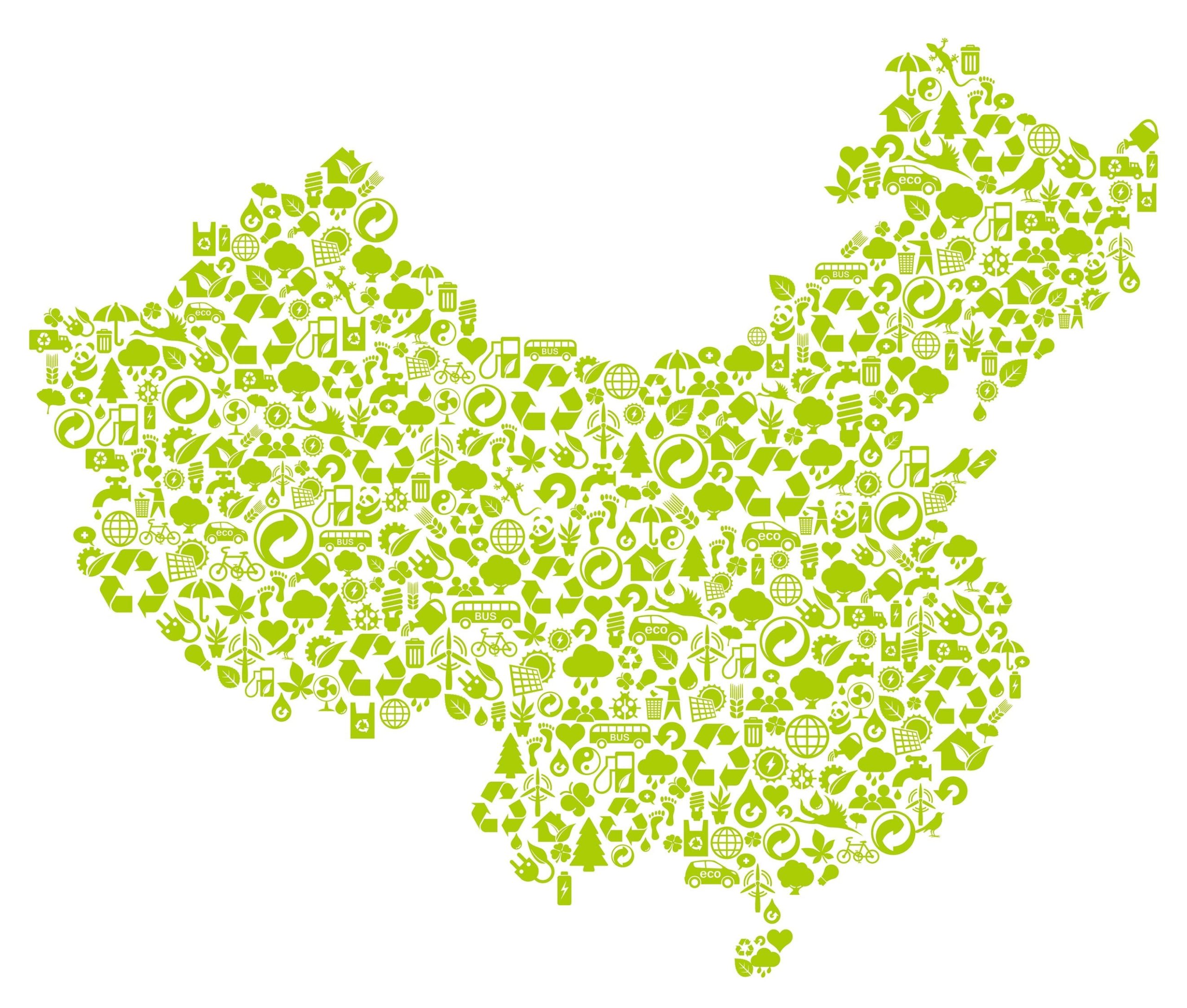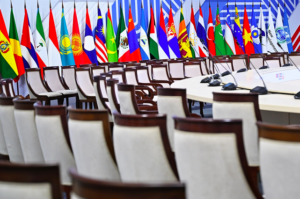Held two months late, and under the specter of an uncertain global future, the annual meetings of the People’s Political Consultative Conference and National People’s Congress recently concluded in Beijing. Dubbed “The Two Sessions”, these are the most important events on the Chinese political calendar. As in other sessions, the most anticipated address was Premier Li Keqiang’s Work Report. This report sets out the Government’s policy priorities and agenda for the coming year, including the annual GDP growth target.
As with everything else in 2020, however, this year was a little different. For the first time since its institution, there was no set GDP growth target. Instead, China’s leaders sought to address the pressing need to balance its unsteady economic ship. The Government proposed a fiscal stimulus of US$506 billion, with a sizeable portion assumed to be going towards special treasury bonds for infrastructure development. Rather than the traditional bridges and tunnels, Li Keqiang noted an investment in “new infrastructure”, which the People’s Daily said will “…inject digital vitality into industrial development and continually unleash economic growth potential.” These new pieces of infrastructure are to include technological advancements like 5G, blockchain, and the substantially vague Internet of Things.
China’s future economic competitiveness, though, is not going to come from shiny objects like 5G (which, if we are honest, is a solution looking for a problem). What is most likely to make China competitive in a post-Covid world lies at the intersection of economics and sustainability. Over the past five years, the Government has demonstrated its understanding of the intimate link between sustainability and positive economic development. What is more, they have capitalized on sustainability towards realizing their economic visions. If China wants to get things back on track post-pandemic, even potentially leapfrogging past other nations, continuing their unique sustainability journey is going to be key.
For the past decade, China has been working hard at changing its image as a gluttonous, polluting behemoth. A turning point came in 2014 when Premier Li Keqiang made another well-received speech criticizing China’s “blind development” and calling for the Chinese people to “declare war” on pollution. President Xi Jinping echoed these comments a few years later at the 19th Party Congress, declaring a new historic juncture in China’s development. “The Chinese nation… has stood up, grown rich, and become strong – and it now embraces the brilliant prospects of rejuvenation… It will be an era that sees China moving closer to center stage and making greater contributions to mankind.”
This is quite the step change from just a few years ago when most considered China not only the world’s factory but also its biggest polluter. While things certainly aren’t perfect, China was doing more than its fair share at creating a sustainable future. With Covid-19, they have had to hit pause on most of these efforts. Leveraging the environmental position, technological expertise, and political willingness in place before the pandemic, though, can work to improve China’s economic competitiveness.
Prior to the coronavirus outbreak, the Chinese Government had a clear plan in place on where it wanted to take its economy. The plan was predicated on three interconnected drivers: streamlining operations in underperforming areas, like state-owned enterprises and manufacturing; improving domestic competitiveness with the rest of the world; and increasing domestic consumption. All of these aim to evolve China from being the world’s factory to one of its premier service providers. If accomplished, they also threaten an economic order many other nations would rather leave as is.
Sustainability and the engine of Chinese production
China’s version of supply-side structural reform is meant to inject life into the economy and move the country towards domestic independence. Reforms include measures to cut excess capacity, shutter inefficient companies, and reward high-performing firms. This began in earnest back in 2014 when, under the banner of environmental protection, the Government began cleaning up highly polluting industries.
The first casualties came from Zhejiang’s Pujiang county, the world’s center for crystal glass production. Here, 21,000 of the 22,000 workshops in the county were shut down for violating environmental regulations. Most of these related to wastewater effluents. I was front and center in the fallout of this crackdown, having to develop risk strategies for multinational clients with suppliers in the area. It was a trying time and one foreshadowing difficulties to come.
Between 2017 and 2018, Chinese regulators continued shoring up enforcement mechanisms throughout the country. Nearly 40% of China’s factories had been shut down during that period. The government also allowed individuals to be held accountable for their actions. During this same period, officials from more than 80,000 factories were punished for their parts in flouting environmental regulations. These included managers and supervisors as well as Party officials. The ultimate result, as with other elements of society running counter to China’s desired narrative, was a very public cleaning of house.
For the factories able to reopen, they were born again with heavy monitoring technologies in place. Officials from the Ministry of Environmental Protection watch these in real-time, ensuring factories on probation are keeping within Government emission limits. Although the Ministry monitors, they are not the ones taking action in case of non-compliance. Instead, fines from the national tax authorities are levied on factory owners. This is what makes this new era of enforcement unique. It is no longer a piece of paper in a record folder somewhere citing your discretions. Now, when you run afoul of environmental regulations, it hits your bottom line…
All of this works to the benefit of both the environment and the economy as pollution goes down, efficiency goes up, and revenue comes in. Around the world, we are witnessing leaders looking for ways to kick-start their economies as the pandemic decimates global markets. This is where China’s new-found production efficiencies are going to come into play. A streamlined manufacturing segment will have an easier time getting up and running versus outmoded or inefficient competitors.
Green investment leads to innovation
In What Got You Here Won’t Get You There, Marshal Goldsmith talks about how delusional self-confidence often creates resistance to change. We see this today with industries excessively focused on rekindling their glory days instead of innovating for the future. The American auto industry is an apt example. On one hand are those going through the futile exercise of trying to onshore jobs and bring Detroit back from the dead. On the other are the innovators and visionaries, like Elon Musk’s Tesla, who are carving out their own niche in a world of continuous change.
In moving away from being just the world’s factory, China also saw the need to future-proof its competitiveness. As part of larger national economic reforms, the Government included measures to help Chinese companies make products that could compete with imported goods and smaller entrepreneurs upgrade their operations. Technological innovation from the likes of Huawei, Alibaba, and Tencent benefited greatly from these reform measures. Now, Silicon Valley giants often turn to these poster children of a New China for inspiration.
It is not just technology that has been given a boost from Government measures. China is, without a doubt, now the world’s leader in sustainable investment. Beijing has invested close of US$400 billion on domestic green technologies since 2017, more than twice that of the entire European Union, and an additional US$250 billion on global projects. China created the world’s first taxonomy on sustainable investment, which is now the global gold standard in impact investment. Public transportation in numerous cities, like the southern megalopolis of Shenzhen, runs entirely on electric vehicles. China also has a long list of other superlatives to add to their resume: the world’s greatest electric vehicle market; the world’s biggest high-speed rail network; the world’s largest solar and wind energy producer. The list goes on…
Fast-forward several decades into the future, which industries are likely to be the most competitive? Will Detroit be the envy of the world, riding high on a wave of economic prosperity, or will it be places like Shenzhen and Hangzhou? China’s strategic investments, including those on the environmental front, have built the foundations for tomorrow’s industries today.
A hole in the pocket
China does not get enough credit for the work it has accomplished in poverty alleviation over the past several decades. Since opening up the economy under Deng Xiaoping’s famous words “to get rich is glorious”, nearly 800 million people have risen out of poverty. That accounts for 70% of the world’s total in poverty reduction. Although classed as an upper-middle-income country by the World Bank, China still fights with significant pockets of poverty in rural areas.
With approximately 10 million people still living below the poverty line, Xi Jinping has set the ambitious goal of entirely eradicating rural poverty by the end of this year. This, despite economic setbacks from Covid-19. The elimination of poverty, an already expansive upper-class, and an additional 300 million Chinese entering the middle-class by 2025 combine to spell a potential economic miracle.
Now strip out the altruism and consider all this within the third area of China’s economic plans, getting Chinese consumers to spend more at home. This is only possible if citizens have the disposable income to do so. Over the past 20 years, economic machinations have helped raise disposable income for both urban and rural Chinese by an astonishing 600 percent. There is a virtuous relationship between increased disposable income and growth in consumption, thus impacting production, job growth, and stock valuation.
Sure, this is often considered economic theory. Some would argue that just because people have the money does not mean they are necessarily going to spend it. The Chinese Government has had a hard time encouraging domestic consumption. A long-held, and often substantiated, suspicion towards domestic quality, safety, and value has plagued adoption by middle-class consumers. With the coronavirus, though, we may see this change. Consumers in more advanced markets along the east coast, including Beijing, Guangzhou, and Shanghai, are not likely to make substantial changes to their spending habits. Those with newly acquired disposable income, particularly the neophyte middle-class and once-rural poor Xi Jinping is so interested in helping, are an untapped segment from which to encourage domestic consumption.
Sustainability as the center piece of China’s strategic development
If realized, streamlining operations through structural reform, improving global competitiveness by injecting capital in the right places, and increasing domestic consumption will not only keep the Government on track with its economic goals but also place it in an advantageous position in a post-Covid world. The command-and-control nature of China’s economy, more so than the majority of other countries, lends well to lever pulling that can get things up and running quickly. While the rest of the world is focussed on getting their broken economies back on track, China has the opportunity to bring about the critical new infrastructure of a future world.
China’s use of sustainability as a galvanizing call to action around economic development is therefore a sound strategic move. If it was done before, it can be done again. My advice to Beijing would be to continue on this well-trod path. Targeting underperforming businesses, particularly the state-owned enterprises and polluting factories long in the Government’s crosshairs, will help President Xi realize one of his China dreams. At the same time, continuing to inject capital into innovation and green tech will place China at a very competitive footing on the world stage. With talk of decoupling, creating the space for domestic consumption ensures China can stand on its own two feet economically, should it need to.
All of this is far more important, strategic, and future-proof than a next-generation 5G network…
Picture credits: istockphoto







Be First to Comment